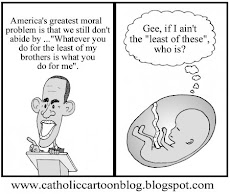But Noonan's writing is occasionally brilliant and one can easily see why she was a very effective speechwriter. In her latest WSJ column she uses the metaphor of the yardstick to explain in simple terms how the Left has been successful in shifting the political spectrum left-ward during the past half century or so. With the collapse of the liberal center, the choices have increasingly come down to conservative or socialist. Noonan explains:
I see two central reasons for the tea party's rise. The first is the yardstick, and the second is the clock. First, the yardstick. Imagine that over at the 36-inch end you've got pure liberal thinking—more and larger government programs, a bigger government that costs more in the many ways that cost can be calculated. Over at the other end you've got conservative thinking—a government that is growing smaller and less demanding and is less expensive. You assume that when the two major parties are negotiating bills in Washington, they sort of lay down the yardstick and begin negotiations at the 18-inch line. Each party pulls in the direction it wants, and the dominant party moves the government a few inches in their direction.
But if you look at the past half century or so you have to think: How come even when Republicans are in charge, even when they're dominant, government has always gotten larger and more expensive? It's always grown! It's as if something inexorable in our political reality—with those who think in liberal terms dominating the establishment, the media, the academy—has always tilted the starting point in negotiations away from 18 inches, and always toward liberalism, toward the 36-inch point.
Democrats on the Hill or in the White House try to pull it up to 30, Republicans try to pull it back to 25. A deal is struck at 28. Washington Republicans call it victory: "Hey, it coulda been 29!" But regular conservative-minded or Republican voters see yet another loss. They could live with 18. They'd like eight. Instead it's 28.
This is brilliant exposition. Noonan is right that the Tea Party is challenging and changing both parties. The historical significance of the Tea Party movement is that it may very well pull the Republican Party back toward the right, the Democratic Party back toward the right and thus create a new center. If it does so, it will go some way to restoring the liberal democratic center that used to form the center of American politics with both parties overlapping much of it.
This means that the re-alignment now occurring in American politics may be as significant as that which occurred during the late 60s and early 70s when the Left took over the Democratic Party and shifted the center to a big government, high tax, welfare state position uneasily poised between socialism and liberalism. Or to put it another way, American politics was moving toward a European model where the voting public was usually presented only with two choices: socialism and socialism implemented more slowly.
It is not always remembered that there were two radical movements that trace their origins to the 1960s. In addition to the well-known New Left, the 60s also witnessed the birth of Goldwater conservatism, which eventually led to the election of Ronald Reagan in 1980. If the Tea Party movement succeeds in restructuring American politics in the way Noonan describes, we could be witnessing the fourth phase of the revival of American Conservatism that arose after World War II.
The first was the rise of the coalition brokered by William F. Buckley and National Review in the 50s between national security hawks, libertarians and traditional conservatives. The second was the Goldwater campaign in the mid-60s and the move of the liberal refugees from the Democratic Party into the Republican camp as Neo-conservatives. The third was the rise of the Religious Right and Reagan years and the fourth is the Tea Party era featuring the actual shrinking of the federal government for the first time in a century.
Will we look back a decade from now and view the Obama phenomenon as the last gasp of the New Deal? Will the Tea Party movement be credited with a fundamental re-alignment of the American political spectrum? Are we living in a time of change as deep and far-reaching as the 1960s? Only time will tell.





No comments:
Post a Comment